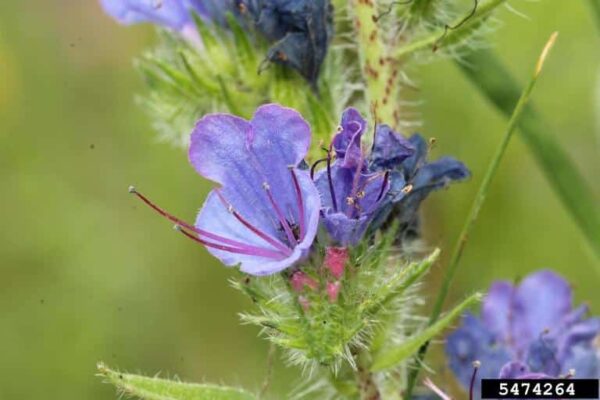Blueweed
Warning
Blueweed is toxic to horses and cattle.
About This Species
Blueweed (Viper’s bugloss) is a hairy, painful to touch plant native to Europe, Western and Central Asia. Plants can drop up to 2800 rough seeds that can be further spread by clinging onto animals or humans. It can be found in dry, basic soils in grasslands, or alongside roads and railways.
It is toxic to horses and cattle and reduces forage quality in rangelands and pastures, resulting in economic losses. Blueweed is designated as a Regional Noxious Weed by the BC Weed Control Act, as well as a Regional Containment/Control species by the BC Provincial Priority Invasive Species List.
How to Identify
Blueweed grows 30-80 cm tall, has an upright, unbranched form with a hairy, painful to touch stem.
Flowers are blue, five lobed and funnel-shaped on the upper side of the short stems.
Leaves are linear and long, forming a basal rosette in its first year. These leaves are present on the lower half of the plant when flower and are also very hairy.
Take Action
Prevention is the best approach.
- Blueweed Factsheet PDF
-
If you need advice about invasive species on your property or you are concerned about reported invasives in your local area, contact your local government or regional invasive species organization.

Plantwise
Learn about best practices
A few non-invasive alternatives to plant instead of Blueweed include:
- Arctic lupine (Lupinus arcticus)
- Common harebell (Campanula rotundifolia)
- Large-leaved lupine (Lupinus polyphyllus)
- Showy daisy (Erigeron speciosus)
REPORT TO PROTECT BC’S BIODIVERSITY

Use the app
Observe and report to protect BC’s biodiversity

Report through this website
Use our form to tell us what you’re seeing and where.


















